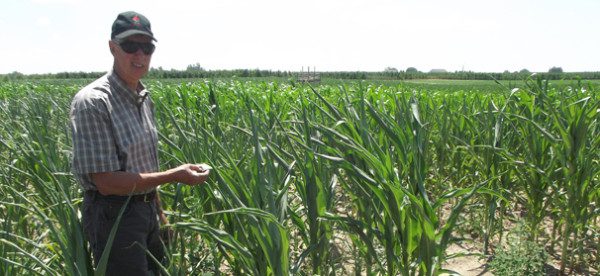

Aug 6, 2012Farm markets scrambling to replace fruit
When the big freeze hit in late April, some farm marketers knew right away this would be a year unlike any they’ve experienced. For others, it took a while for reality to sink in, said Bob Tritten, an Extension educator with Michigan State University.
Tritten has talked to farm marketers across Michigan since the cold killed most of the state’s apple and cherry crops. A few are shutting down their markets for the year, because there just aren’t enough apples to make it worthwhile. However, most are scrambling to find fruit and looking for ideas to keep cash coming in. Outside-the-box thinking is required, he said.
Some farm marketers are driving as far south as Pennsylvania, Kentucky and even North Carolina to buy fruit. During past shortages, marketers could buy fruit from growers in other parts of Michigan, but this year nobody has enough fruit to spare, Tritten said.
Others will try to find replacement crops, or stretch their meager supplies as far as they can. Some who sell at farmers’ markets won’t go this year. Others won’t do u-pick; they’ll sell what little fruit they have at their home market, Tritten said.
Instead of selling half bushels and pecks of apples, some will sell quarts and half pecks. Cider by the gallon might be replaced by half-gallon sizes, he said.
Almost every farm Tritten has visited lately has planted extra pumpkins, tomatoes, sweet corn – anything to replace lost apples and cherries, to have something to sell.
Shortages also will impact school tours. In most cases, farmers will still offer wagon rides, but instead of receiving apples, students will be given pumpkins or something else, he said.
Phil Schwallier, who runs Schwallier’s Country Basket in Sparta, Mich., with his wife, Judy, said they would buy what fruit they can from other growers. They’ll also look for alternative commodities to sell – mostly vegetables. They’ll expand baked good sales, too.
The Schwalliers will discontinue some fruit-related activities, such as u-pick, but will probably offer more orchard tours – which they’ll use as an opportunity to explain the situation to customers.
Farm markets are working extra hard to communicate the scale of the problem to their customers. They’re using websites, emails, Facebook and Twitter to let customers know that they won’t have fruit in normal amounts, but they’ll have something to sell. Tritten encouraged all growers to ask for support from their customers.
Cider mills are scrambling for fruit, too. Some don’t grow their own apples, and are looking anywhere for the volumes they need. Some are trying to buy fruit from Washington state, but it’s expensive to ship fruit that far and they don’t have established relationships with growers out West, Tritten said.
In Portville, N.Y., Cummins Cider Mill owner Donny Leilous expects to pay double for his cider apples this fall, due to the shortage in his home state. His cider mill is open from September through November and offers cider and donuts. If there’s enough rain, he might sell some pumpkins, but other than that, there’s not much else he can do this year, he said.
There might be a silver lining to the disaster, Tritten said. Five years from now, farm marketers might look back at 2012 as the year they were forced to come up with good ideas – things they’d never tried before, but worked well for them in the long run.
That’s what happened to the Byers family in 1966, when a bad freeze completely wiped out their fruit crops. The losses nearly put the Bedford, Ind., family farm out of business. Instead, they decided to diversify.
“Thank goodness we did,” said David Byers, who runs the farm, called Applacres Orchard, today.
Applacres learned to survive by selling a mix of crops and other products. Byers, now 74, sells bedding plants, honey, jams, jellies, apple butter and other items, along with peaches, apples and berries.
“If I just sold apples and peaches, I’d be in real trouble,” Byers said. “I learned that lesson long ago.”
This year, Applacres was hit by a bad freeze April 11-12, when the crops were about three weeks ahead of normal. By late June, Byers thought up to 10 percent of his peaches and apples might be salvageable, along with roughly half his blackberries and raspberries. What was left of his nectarines and apricots looked “terrible,” he said.
In other bad years, he bought fruit from Michigan growers — not an option this year. The goal at this point is survival, he said.
Byers was selling what peaches he had from his roadside market by late June, earlier than normal. People were buying them, and weren’t complaining about their less-than-perfect appearance. Of what he did pick, he threw away at least half because they looked bad, he said.
By Matt Milkovich, Managing Editor














